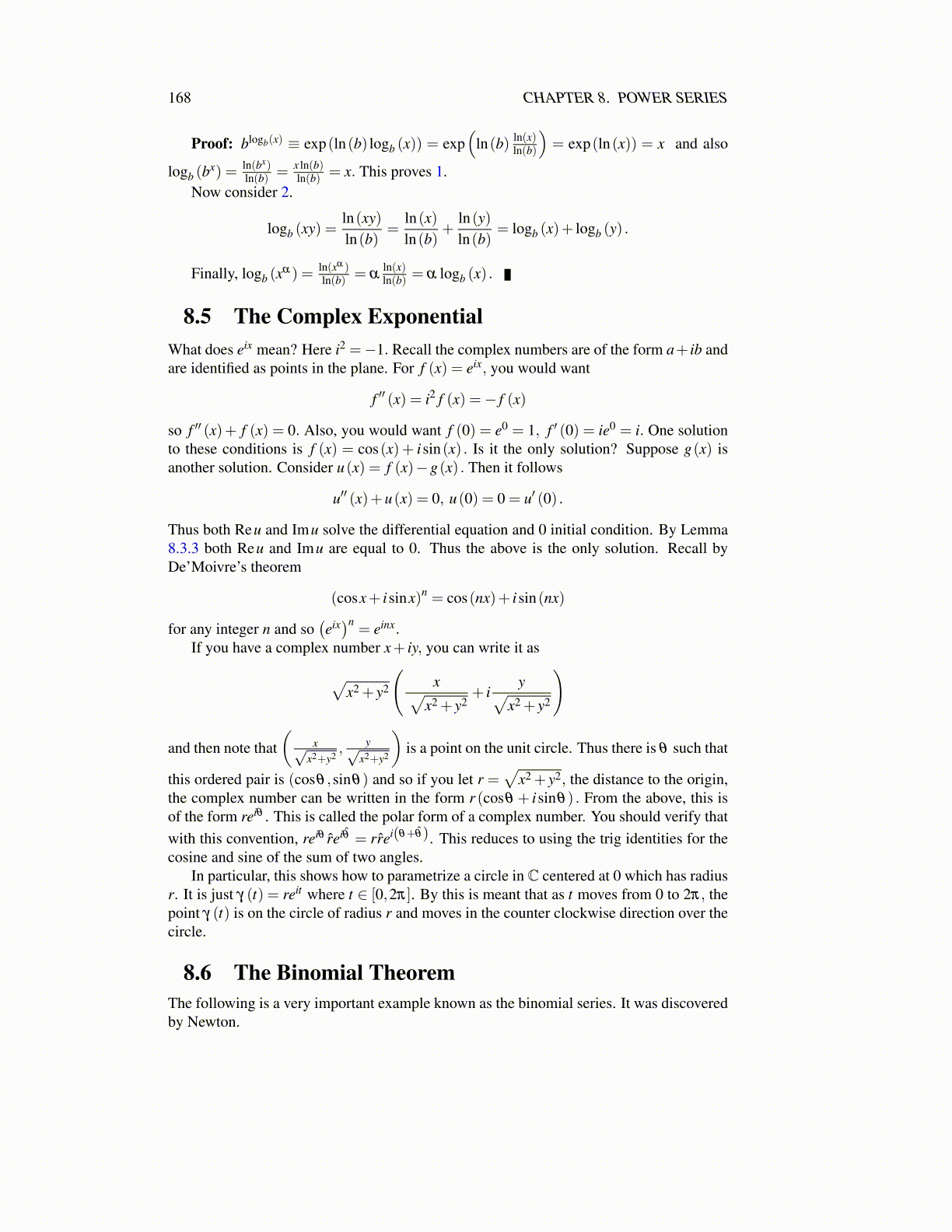
168 CHAPTER 8. POWER SERIES
equals 1. It will then follow that this series equals (1+ x)α because of uniqueness of theinitial value problem. To find the radius of convergence, use the ratio test. Thus the ratioof the absolute values of (n+1)st term to the absolute value of the nth term is∣∣∣α(α−1)···(α−n+1)(α−n)
(n+1)n!
∣∣∣ |x|n+1∣∣∣α(α−1)···(α−n+1)n!
∣∣∣ |x|n = |x| |α−n|n+1
→ |x|
showing that the radius of convergence is 1 since the series converges if |x|< 1 and divergesif |x|> 1.
The expression, α(α−1)···(α−n+1)n! is often denoted as
(α
n
). With this notation, the follow-
ing theorem has been established.
Theorem 8.6.2 Let α be a real number and let |x|< 1. Then (1+ x)α =∑∞n=0(
α
n
)xn.
There is a very interesting issue related to the above theorem which illustrates the lim-itation of power series. The function f (x) = (1+ x)α makes sense for all x > −1 but oneis only able to describe it with a power series on the interval (−1,1) . Think about this.The above technique is a standard one for obtaining solutions of differential equations andthis example illustrates a deficiency in the method. An even more troubling example is
11+x2 which makes sense and is differentiable for all x ∈ R but its power series diverges for|x|> 1. This is because the function fails to be differentiable at x = i in the complex planeand so, if it had a valid power series, this could not happen thanks to the above theorems.However, we may only care about real values of x and if so, this reliance on power series ispretty useless.
To completely understand power series, it is necessary to consider complex analysisbecause this is where they make sense. It turns out that the right way to consider Taylorseries is through the use of geometric series and something called the Cauchy integralformula of complex analysis. An introduction to complex analysis is given later.
8.7 Exercises1. In each of the following, assume the relation defines y as a function of x for values
of x and y of interest and find y′ (x) .
(a) xy2 + sin(y) = x3 +1
(b) y3 + xcos(y2)= x4
(c) ycos(x) = tan(y)cos(x2)+2
(d)(x2 + y2
)6= x3y+3
(e) xy2+yy5+x + cos(y) = 7
(f)√
x2 + y4 sin(y) = 3x
(g) y3 sin(x)+ y2x2 = 2x2y+ ln |y|
(h) y2 sin(y)x+ log3 (xy) = y2 +11
(i) sin(x2 + y2
)+ sec(xy) = ex+y +
y2y +2
(j) sin(tan(xy2))
+ y3 = 16
(k) cos(sec(tan(y)))+ ln(5+ sin(xy)) = x2y+3
2. In each of the following, assume the relation defines y as a function of x for valuesof x and y of interest. Use the chain rule to show y satisfies the given differentialequation.